Ancient Egyptian Astronomy: Facts, Tools, Constellations
In ancient times, the sky was the grand theater of cosmic events, where divine beings moved and interacted. It held especially true for the Ancient Egyptians, who considered the heavens a reflection of the terrestrial and sacred worlds. Astronomy was not just a scientific pursuit for them—it was a way to understand the universe and its place.
Their observations of celestial bodies’ movements influenced their religious beliefs, calendars, architecture, and even daily life, turning Ancient Egyptian Astronomy into an integral part of their civilization’s fabric.
The Ancient Egyptians believed the heavens were a mirror image of life on Earth. They saw a dynamic, ever-changing sky reflecting their understanding of life, death, divinity, and the afterlife. Astronomy became a guiding principle in many aspects of their culture, from creating complex calendars to aligning colossal pyramids.
In ancient Egyptian mythology, the gods resided in the sky, and celestial events were interpreted as divine messages. Therefore, understanding these star patterns was crucial for religious ceremonies, agricultural planning, and the construction of temples and tombs.
Tools of Ancient Egyptian Astronomy
The Merkhet: Ancient Egyptian Alignment Tool
| Tool Name | Description |
| Merkhet | The world’s oldest known astronomical tool, the Merkhet (meaning “instrument of knowing”), was essentially an Egyptian timepiece that helped align buildings and temples with the stars. Crafted from a palm rib with a plumb line attached to a weight, this tool was used after sunset, aligning with the Pole Star to find the true north. |
How to Use a Merkhet
Using a Merkhet requires two people and two devices. One person would align the plumb line with the Pole Star while the other would sight along the top edge of the palm rib to align with specific stars. By marking the stars’ movements, the Egyptians could divide the night into time units, providing remarkable accuracy considering the tools’ simplicity.
While we do not advocate recreating these tools or methods—modern technologies offer more precision—it’s fascinating to appreciate the ingenious solutions the Ancient Egyptians devised to observe and track celestial events.
The Egyptian Shadow Clock: Timekeeping in Ancient Egypt
| Tool Name | Description |
| Egyptian Shadow Clock | One of the earliest timekeeping instruments, the Egyptian Shadow Clock or sundial, was used predominantly during the day. Crafted from a flat piece of wood or stone, it had a raised crossbar or obelisk at one end that cast a shadow over a scale of hour-lines. This shadow moved as the day progressed, indicating the time. It was an essential tool for tracking the journey of the Sun god Ra across the sky. |
The Workings of an Egyptian Shadow Clock
The operation of an Egyptian shadow clock relied heavily on sunlight. As the Sun permanently moved slowly across the sky, the shadow cast by the crossbar or obelisk shifted along the hour-lines, indicating the time of day.
These sundials were calibrated to account for the changing length of the bright day throughout the year. In the morning, the shadow would be long and shortened until midday, when it would be at its smallest. As the afternoon progressed, the shadow would lengthen again.
These timekeeping devices could have been better but they provided a rough time estimate. It’s truly a testament to the innovation of the ancient Egyptians, who relied on these rudimentary tools to manage their daily lives and religious rituals, always in harmony with the cosmos.
Obelisks: Ancient Egyptian’s Sun Trackers
| Tool Name | Description |
| Obelisks | Obelisks are monumental stone structures that were prominent in the architecture of ancient Egypt. They were typically nicely carved from a single piece of stone, usually granite, with a quadrangular tapering shaft and a pyramid (a small pyramid) at the top. These monoliths were often placed in pairs at the entrances of temples and were seen as petrified rays of the sun disk. The obelisk served as architectural and religious symbols and as precise timekeeping devices. |
How Obelisks Were Used to Track the Sun
An obelisk operated as a giant sundial. Its pointed apex (pyramidion) was often gilded or capped with electrum (a mix of gold and silver), reflecting the Sun’s rays. As the Sun moved lazily across the sky, the shadow cast by the obelisk would shift, indicating the time of day.
The obelisks were strategically placed so that their shadows would cover certain areas at different times of the day. For instance, at noon, the shadow would fall within the temple precinct, indicating the highest point of the Sun’s trajectory. In this way, obelisks helped the ancient Egyptians to regulate their daily activities and religious ceremonies, keeping their lives in sync with the solar deity Ra’s daily journey across the sky.
This ingenious use of obelisks demonstrated the ancient Egyptians’ profound understanding of the Sun’s movement and their capacity to merge functionality with symbolism, thereby incorporating celestial timekeeping into their architecture.
The Star Clock: Timekeeping by Stars
| Tool Name | Description |
| Star Clock | One of the most remarkable tools for timekeeping in ancient Egypt was the star clock. These were diagrams often found inscribed on the inside of coffin lids, starting from the Middle Kingdom period. The star clock contained a list of decanal stars that rise or set at the horizon sequentially, providing a reliable method for keeping time during the night. Each decan represents a ten-day week in the Egyptian calendar, allowing Egyptians to maintain an accurate record of days throughout the year. |
The Workings of a Star Clock
The star clock’s functioning was premised on the predictable cycle of stellar movements. The Egyptians divided the night into twelve parts, corresponding to the twelve months of their calendar. Each month was divided into three ‘weeks’ of ten days, each represented by a specific decan. The appearance of a decan on the eastern horizon just before dawn marked the start of a new ten-day period.
A star clock typically lists 36 decans, ordered by the sequence of their heliacal rising (appearance on the horizon just before sunrise). These decans were tracked across the night sky to tell time. For example, if the decan for the current ten-day period were in the middle of the sky, it would indicate that the night was halfway through.
This system proved efficient for tracking time and dates over long periods, as the decans’ annual cycle matched well with the Egyptian solar year. The interplay between the stars and the Sun, central to Egyptian cosmology, was thus beautifully represented in the practical tool of the star clock. These clocks provide an insightful glimpse into how deeply intertwined the practical and the symbolic were in ancient Egyptian astronomical practices.
Ancient Egyptian Constellations
| Egyptian Name | English Translation | Location |
|---|---|---|
| Spdt | Triangle | Sirius and accompanying stars |
| s3ḥ | Sah | Orion – head at the belt ; Lepus |
| Ꜥrt | Jaw | Hyades with Aldebaran |
| ḫ3w | Myriad or Flock | Pleiades |
| ḳd | Circle or Sheepfold | Head of Cetus |
| sb3 n sꜤr | Star of Fire | Capella |
| 3pd | The Bird | Triangulum ; Perseus |
| Ꜥryt | The Two Jaws | Cassiopeia |
| nḫt | The Giant | Aquila to Pegasus (in the square) |
| ṯms n hntt | The Red One of the Prow | Antares |
| srt | Sheep or Goat | Capricornus |
| wi3 | The Boat | Sagittarius |
| sb3w Ꜥš3w | Many Stars | Coma Berenices |
| rrt | The Female Hippopotamus | The Female Hippopotamus |
| 3st d3mt | Crocodile | Serpens Caput |
| ṯ3 nfr | Beautiful Child | Spica |
| mnit | Mooring Post | Bootes + Arcturus |
| msḫtyw | The Bull’s Foreleg | The Plough |
| 3n(w) | Anu (avatar of the god Horus) | From Lynx to Canes Venatici |
| ipds | Its Own Count or Bright Star | Beta Centauri (Hadar) |
| Sbšsn | Sage’s Star | Alpha Centauri (Rigil Kent or Toliman) |
| wš3ty bk3ty | Twins and Two Ladies | Southern Cross |
| d3t | The Ferryboat | Area around Argo Navis |
| ḥtp rdwy | Lying on His Feet | Hydra |
| m3i | The Divine Lion | Leo |
| ḥḳw n sꜤḳ | The Plunderer | Leo Minor |
| sb3w nw mw | Stars of Water | Praesepe (M44) |
| tpy-Ꜥ sb3wy | Predecessor of the Two Stars | Alhena in Gemini |
| sb3wy | Pair of Stars | Castor ; Pollux |
| Štwy | The Two Tortoises | Gomeisa ; Procyon |
| knmt | Cow (?) | Puppis ; Canis Major |
| nwt | Nut, goddess | Milky Way |
The cosmos held great significance for the ancient Egyptians. Their night sky observations played crucial roles in their religious and cultural life. This deep-seated fascination and respect are exemplified in their study of constellations. The ancient Egyptian constellations, often depicted in art and referenced in ancient texts, provided a night sky map. However, these constellations differed from the 88 recognized by modern astronomers today. The old Egyptian sky was a tapestry of deities and mythological creatures, their positions and movements in the night sky woven into the fabric of their society, informing agriculture, spirituality, and timekeeping.
Detailed List of Known Ancient Egyptian Constellations
| Constellation Name | Description/Significance |
| Orion | Orion, or Sah, was one of the most important shiny constellations in ancient Egypt. Identified with Osiris, the god of the afterlife, the dead, and rebirth, Orion’s rising signaled the start of the farming season. The three stars forming Orion’s belt were seen as a symbol of Osiris’ resurrection. |
| Sirius | Sirius, or Sopdet, was linked to the goddess Isis, the wife of Osiris. Its heliacal rising, or its emergence just before dawn, signaled the onset of the Nile’s annual flood, an important agricultural event. |
| Ursa Major | Ursa Major, or Meskhetyu, was associated with a bull’s foreleg or an adze, a tool linked with the god Ptah. This constellation was used as a guide for orientation and was an important symbol in the coronation of the Pharaoh. |
| Draco | Draco, or Taweret, was seen as the hippopotamus goddess of childbirth and fertility. It was viewed as a protector of women and children and was always near the pole, serving as a constant protector. |
Sopdet (Sothis): The Star of the New Year
Sopdet, known to the old Greeks as Sothis and to modern astronomers as Sirius, is the brightest star in our night sky. This celestial body held enormous significance for the ancient Egyptians. To them, Sopdet was the herald of the New Year, its heliacal rising closely correlating with the life-giving inundation of the Nile River. The heliacal rising is an astronomical event where a star first becomes visible above the eastern horizon shortly before sunrise. Sopdet’s appearance announced the arrival of the Nile flood, an important event for the agricultural society.
In Egyptian mythology, Sopdet was linked to Isis, the divine mother figure and consort of Osiris, who had a vital role in the myth of the resurrection and eternal life. Sopdet is located in the constellation of Canis Major and stands out due to its immense brightness. It is easily visible in the winter night sky from the northern hemisphere.
Sah: The Hidden One
Sah, identified with the constellation of Orion by modern astronomers, was another star of utmost importance in the ancient Egyptian sky. Known as ‘The Hidden One,’ Sah was associated with Osiris, the god of the afterlife, resurrection, and fertility. The constellation was portrayed as a heavenly representation of Osiris, with the three stars of Orion’s belt symbolizing Osiris’s final resting place.
The constellation Sah, like Sopdet, was involved in predicting the annual flooding of the Nile. When Sah and Sopdet aligned in the night sky, the Egyptians knew the flood season was imminent. You can find Sah in the celestial equator, visible worldwide during winter evenings.
Nut: The Goddess of the Sky
The sky itself was worshiped in ancient Egypt as the goddess Nut. Nut was represented as a woman arched over the Earth, her body adorned with stars. Her depiction in countless temple ceilings and tomb paintings affirms her significance.
Nut’s role was integral in the journey of the Sun god, Re. Each evening she would swallow the Sun, which would travel through her body overnight and be reborn each morning. In this daily cycle, Nut was seen as the mother of the Sun itself, the moon, and heavenly bodies. Her representation was not only limited to the sky but extended to the Milky Way. Nut was often portrayed as a cow with her belly forming the arch of the Milky Way across the night sky. This representation signifies the nurturing aspect of the universe and the ongoing cycle of life, death, and rebirth.
Facts About Ancient Egyptian Astronomy
Astronomy and Ancient Egyptian Calendar System
The meticulous observation of celestial bodies played a significant role in formulating the ancient Egyptian calendar system. They developed one of the first solar calendars known to humankind, which was incredibly accurate. It consisted of 365 days divided into twelve months, each of thirty days, with an extra five ‘epagomenal’ days tacked onto the end. This calendar was primarily informed by the heliacal rising of the star Sopdet, whose appearance signified the start of the inundation of the great Nile and the beginning of the New Year.
Astronomy and the Great Pyramids
Astronomy was also intimately connected to the grand structures of ancient Egypt, most notably the Great Pyramids. These colossal structures, marvels of human ingenuity, are not arbitrarily placed. The three pyramids of Giza (those of Khufu, Khafre, and Menkaure) are thought to be in relative alignment with the three stars of Orion’s belt (part of the Sah constellation), a testament to the Egyptians’ precise understanding of the night sky. Moreover, the entrances to these pyramids are oriented toward the north, aimed at the circumpolar stars that never set, a pathway for the Pharaoh’s journey to the afterlife.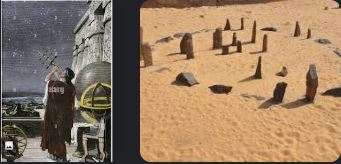
Astronomy in Ancient Egyptian Religion and Mythology
As illustrated earlier in our exploration of specific constellations and stars, astronomy was deeply interwoven with ancient Egyptian religion and mythology. The sky was nicely seen as a divine realm, hosting deities like Nut and figures like Sah and Sopdet, associated with Osiris and Isis. Astronomical phenomena were interpreted as the actions of these deities, infusing the cosmos with profound mythological significance.
Astronomical Ceiling of Senemut: A Snapshot of Ancient Egyptian Sky
One of the most remarkable artifacts revealing the sophistication of ancient Egyptian astronomy is the astronomical ceiling of Senemut’s tomb. Senemut, an architect and the chancellor of Queen Hatshepsut, had his tomb adorned with an intricate and detailed depiction of the night sky. This star map, the earliest known in Egypt, displays a host of celestial figures, stars, and constellations, including Orion (Sah), Sirius (Sopdet), and several circumpolar constellations. It is a compelling testament to ancient Egyptians’ rich astronomical knowledge.
More about The Tools and Techniques
The ancient Egyptians were skilled astronomers, and they developed many tools and techniques to aid in their night sky observations. These tools were crucial in their quest to understand the movements of the stars and planets, and they paved the way for modern astronomy.
One of the most essential tools used by the ancient Egyptians was the market, a simple device made of wood or reed that could measure the angle between stars. This tool allowed them to determine the positions of the stars and track their movements over time. They also used the plumb line to help them align their observations with the horizon.
Another important tool was the water clock, which they used to measure nighttime time. The water clock counted the water flow from one container to another, allowing the ancient Egyptians to keep track of time as they observed the stars.
The ancient Egyptians also developed a sophisticated system of calendars based on the movements of the stars and planets. They used a 365-day calendar divided into 12 months of 30 days each, with an additional five days at the end of the year. They also used a lunar calendar based on the moon’s cycles.
In addition to these tools and techniques, the ancient Egyptians also used their knowledge of geometry and mathematics to make accurate observations of the night sky. They used trigonometry to measure the angles between stars, and they developed complex mathematical models to predict the movements of the planets.
The importance of these tools and techniques in the development of modern astronomy cannot be overstated. Many of the concepts and methods developed by the ancient Egyptians are still used by astronomers today, and they continue to provide valuable insights into the workings of the Universe.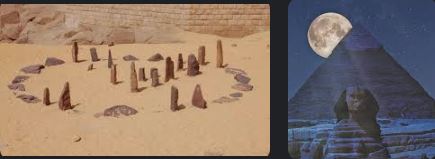
In conclusion, the tools and techniques developed by the ancient Egyptians played a crucial role in the development of astronomy. Their markets, plumb lines, water clocks, and calendars allowed them to make accurate observations of the night sky, and their knowledge of geometry and mathematics helped them develop complex Universe models. Thanks to their efforts, we have a deeper understanding of the cosmos today.
The Calendar and Farming
The ancient Egyptian calendar was based on astronomical observations and played a crucial role in the lives of the ancient Egyptians. The calendar was used to track the flooding of the Nile, which was essential for agriculture and the economy. The flooding of the Nile was so significant to the ancient Egyptians that they based their calendar around it.
The ancient Egyptian calendar was solar, meaning it was based on the movement of the Sun. It consisted of 12 months, each 30 days long, followed by five additional days that were not part of any month. It created a 365-day calendar, which was remarkably accurate given the limited astronomical tools available at the time.
The ancient Egyptians used their astronomical knowledge to determine the farming season. They tracked the movements of Sirius, the brightest star in the sky, associated with the Nile flooding. When Sirius rose in the sky, the Nile would flood, and the farmers would begin planting their crops. It was a critical time for the ancient Egyptians, as it determined the success of their crops for the year.
The ancient Egyptians also used the position of the Sun to determine the seasons. They noticed that the Sun was directly overhead in Aswan during the summer solstice. It was the longest day of the year and the beginning of the flood season. Similarly, the Sun was directly overhead in Memphis during the winter solstice, marking the harvest season’s outset.
The ancient Egyptians’ knowledge of astronomy played a significant role in their agricultural practices. They were able to predict the flooding of the Nile and plant their crops accordingly, which ensured the success of their harvest. Their astronomical observations and calendars were so accurate that they are still used as a reference today.
In conclusion, ancient Egyptian astronomy was a sophisticated field that significantly impacted their society. From tracking the movements of stars to predicting the flooding of the Nile and determining the farming season, the ancient Egyptians used their astronomical knowledge to enhance their daily lives. Their astronomical tools and techniques also contributed to the development of modern astronomy, making them a crucial part of the history of science.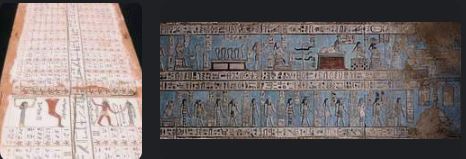
More Ancient Egyptian Astronomy Facts
Ancient Egyptian astronomy is a fascinating field of study that has captured the attention of many over the centuries. While many people are familiar with the pyramids and other great monuments of ancient Egypt, only a few know about the rich history of astronomy in this ancient civilization. This section will explore some interesting facts about ancient Egyptian astronomy that may surprise you.
- The ancient Egyptians were some of the earliest astronomers in history. They started studying the stars and celestial bodies as early as 4000 BC.
- The Egyptians had a complex astronomy system based on careful observation and measurement. They used their astronomical knowledge to create a calendar and track the seasons.
- The Egyptians believed that the stars were the souls of their gods and used astronomy to divine the will of the gods.
- The Egyptians used a device called the market to measure the positions of stars. It consisted of two plumb lines and a crossbar to sight the stars.
- The Egyptians believed that the Sun was a god called Ra and that he traveled across the sky in a boat.
- The Egyptians were the first people to record a supernova. In 1006, they recorded the explosion of a star that was visible for several weeks.
- The Egyptians had a detailed understanding of the cycles of the planets. They knew that the world Venus was both the morning and evening star and were able to predict its movements.
- The Egyptians believed the sky was divided into 36 decans, groups of stars that rose and set over ten days.
- The ancient Egyptians used astronomy to help them navigate the Nile River, which was essential for their agriculture and transportation.
- Many ancient Egyptian temples and tombs were aligned with specific astronomical events, such as the rising of certain stars.
Studying ancient Egyptian astronomy can provide valuable insights into the development of astronomy as a science. The Egyptians’ careful observations and measurements paved the way for modern astronomy, and their astronomical knowledge was essential to their society and culture. By studying these fascinating facts, we can gain a better understanding of the ancient world and the vital role that astronomy played in it.
Conclusion
In conclusion, ancient Egyptian astronomy was an impressive field of study that played a significant role in the development of modern astronomy. The ancient Egyptians made remarkable astronomical observations and discoveries using sophisticated tools and techniques. They created accurate calendars and were able to determine the farming season through astronomical observations, which was crucial to their society.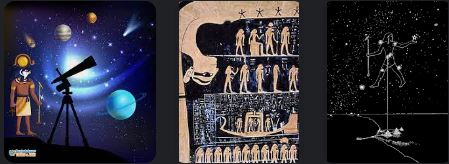
Ancient Egyptian astronomical knowledge had similarities and differences when compared to Sumerian astronomy. Sumerian knowledge may have influenced the development of ancient Egyptian astronomy.
Many interesting facts about ancient Egyptian astronomy are lesser-known, such as the fact that they believed the sky was a goddess named Nut and had a special reverence for the constellation of Orion.
Studying the development of ancient Egyptian astronomy over time through the Egyptian astronomy timeline allows us to understand better the progression of astronomical knowledge and how it has impacted our modern understanding of the Universe.
In conclusion, ancient Egyptian astronomy is a fascinating field of study that has significantly impacted our understanding of the Universe. We encourage everyone to learn more about this impressive field of research and to continue to appreciate the accomplishments of the ancient Egyptians in this field.

Marta Savova is a journalist, health, technolgy and science writer. With over 20 years of experience in the field, she has published numerous research papers and articles and has a passion for sharing his knowledge with others. He is a regular contributor to several media.
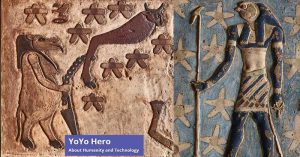
Wow, this is an intriguing read! However, I’d like to add something regarding the star clock section. It’s worth noting that these star clocks were often customized for specific geographical locations, and their precision would decrease the further away you moved from the location for which they were created.
Great article! But don’t forget the ‘air shafts’ in the Great Pyramid. Some argue that these are more than just ventilation shafts, they were precisely aligned with specific stars, indicating a far more advanced understanding of astronomy than we often give the Ancient Egyptians credit for.